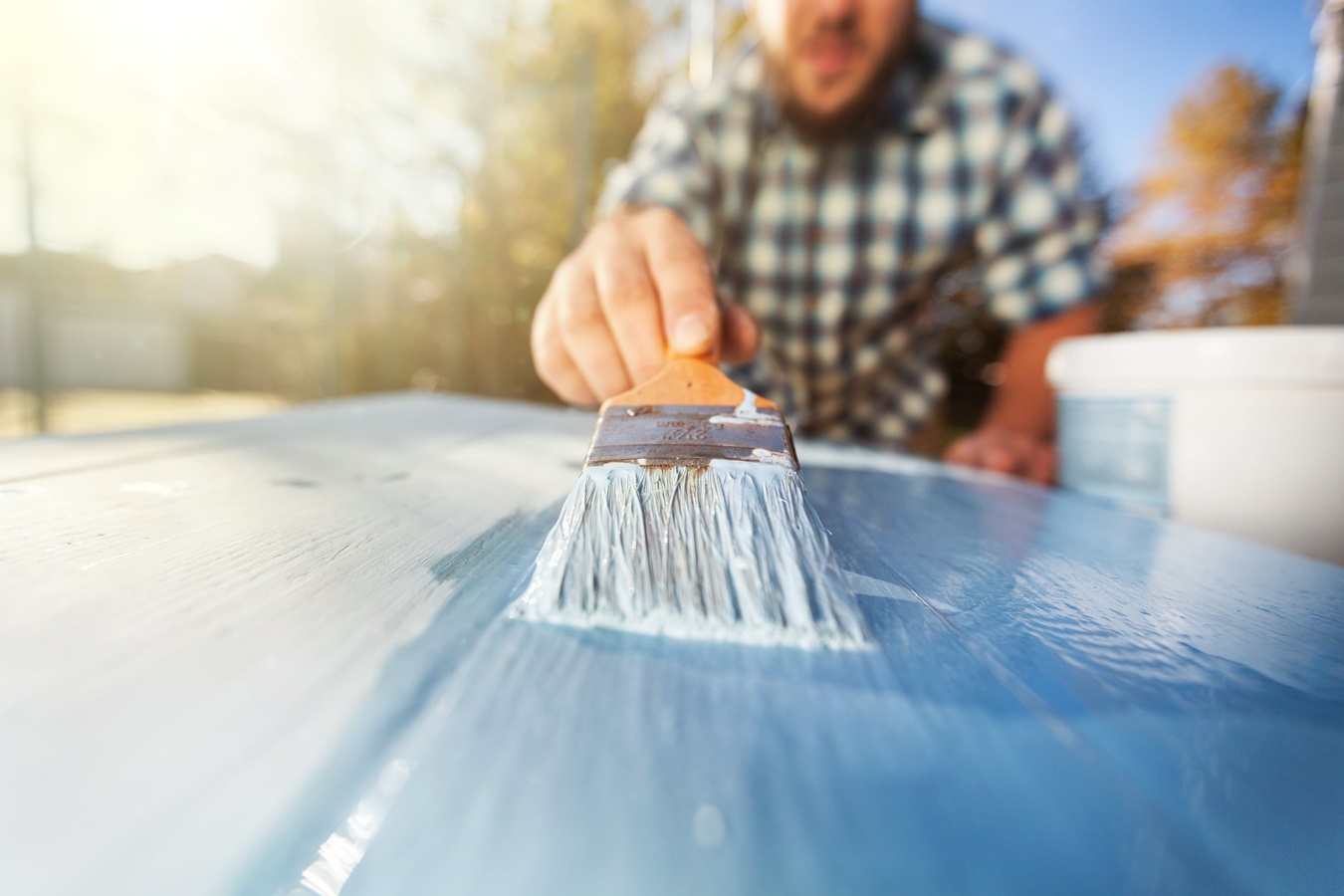Who doesn’t love the walls of their houses to be flawless? Homeowners spend a lot of time and money just to paint their spaces so that they look clean, presentable, and free from any spots. Unfortunately, over time, you will find various types of unwanted spots or patches, and today, we are going to look at a common one, which is known as marring.
What is marring?
The word “marring” is often used to refer to glossy patches or polished areas that show up on painted surfaces. Paint films that are repeatedly rubbed or washed can show an increase or decrease in gloss or sheen, and that area can show a shiny patch known as marring. “Burnishing” is another term used to describe this same effect.
Burnishing or marring commonly appears when an area is abrasively cleaned and scrubbed to get rid of stains with cleaning agents like hard liquids or when furniture or other objects brush up against the painted wall. Compared to pastel shades and lighter colours, the “Marring” effect is much more noticeable with deeper, darker, or more vibrant colours, particularly if the darker colours are chosen for broad wall surfaces like feature walls and accent areas.
To address the issue more accurately, we can look at these two definitions provided by AS/NZS 2310 “Glossary of Paint and Painting Terms” –
- Shiny or lustrous spots on a painted surface are caused by rubbing the painted surface.
- The polished or glossy appearance of a surface is produced by mechanical action.
The science behind paint burnishing or marring
There are two aspects of paint that you need to understand first before identifying any solutions for paint burnishing-
- Sheen Level: The glossiness of the paint finish is referred to as the sheen level. The sheen level of a colour can affect how it appears.
- Light Reflectance Value (LRV): The Light Reflectance Value (LRV) of colour indicates how much usable and visible light reflects from a painted surface. The darker the colour you choose, the lower the LRV it will contain.
So, basically, when you use a low sheen level paint, marring can be prominent. How? Abrading a traditional low-sheen level paint surface results in rounded edges and microscopic roughness from the inert pigments that are used to give the lower gloss. The damaged patch appears noticeably shiny or polished because of the different ways in which these worn or rounded pigment particles scatter light. Furthermore, because there is less binder (latex resin) in the formulation, paints with lower sheen levels exaggerate the overall problem.
In addition, if you paint your walls with low LRV colours combined with low sheen paint, less light is reflected, and more is scattered. This condition makes surface abrasions and flaws more noticeable due to their shiny appearance. Moreover, dark-coloured paint films might change in appearance even after only light rubbing with a very soft, non-abrasive cloth. Mainly, the rubbing onto the paint alters how light interacts with the surface and causes this change.
What causes paint to burnish?
As a houseowner in Sydney, you might find marring or burnishing, usually in high-traffic areas that need to be cleaned frequently, such as family rooms, hallways, doors, and stairs. Especially if these walls have critical lighting, marring seems more noticeable.
Here is a list of causes that are responsible for it-
1. Incorrect method of cleaning
Washing painted surfaces with abrasive cleaning solutions or tools like scrubbers is the main reason behind burnishing. Also, washing or spot cleaning too frequently as soon as you find a small mark can be a significant reason, too.
2. Wrong choice of paint
Using lower quality paint that has no resistance to abrasion or scrubbing is why the paint creates those marring in the first place. Moreover, if you are painting a high traffic area’s broad wall surfaces with dark or vibrant colours that too with a matt sheen level paint, then you will see visible marring spots more quickly.
3. Uncareful placement of household items
We keep our furniture, décor items, or other household items, usually adjacent to the walls. These furnishings regularly rubbing against the painted walls can also cause paint burnishing, and when you move those items from that place, the mark gets prominent.
How to fix paint burnishing?
After burnishing or marring has occurred on the painted surface, it will be highly challenging, if not impossible, to remove the shiny areas with just washing. Sectional repair or repainting the whole wall is the best option if you notice these permanent scars on your walls. This time, ask your hired house painters in Sydney to think about using superior, long-lasting paint with a higher sheen that can withstand whatever is causing the flaws.
How do you stop burnishing or marring from coming back?
You need to take preventive measures to stop these shiny patches from appearing again on your walls. Here’s how you can prevent paint from burnishing or marring-
- Use a piece of cloth that is soft or a sponge to clean painted surfaces with non-abrasive cleaners such as Ajax Spray’ n’ Wipe™, recommended by Dulux, then rinse with fresh water.
- Prior to scrubbing or cleaning painted surfaces, check the manufacturer’s cleaning instructions.
- Wait at least two weeks after painting before cleaning the surface for maximum durability.
- Observe the areas where painted surfaces are being rubbed by furniture and other items, and move the items at least one finger further from the walls.
- Choose high-quality paint that has a higher sheen, such as eggshell, satin, pearl, or semi-gloss, for high-traffic areas.
- Avoid dark, deep and vibrant colours in areas that will need frequent cleaning.
- Don’t use flat sheen paints in high-traffic areas; instead, use quality acrylic or latex paint.
Do your walls also have some shiny patches that you don’t know how to fix easily? For your house in Sydney, contact Priority One Coatings today and get expert residential painters to handle the marring issue.
For any residential painting services, contact us today.
References
https://www.saiglobal.com/PDFTemp/Previews/OSH/as/as2000/2300/2311-2009.pdf

